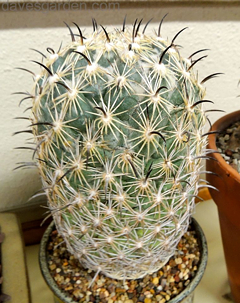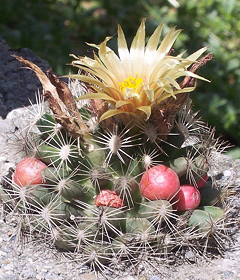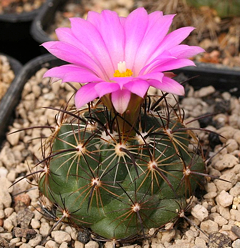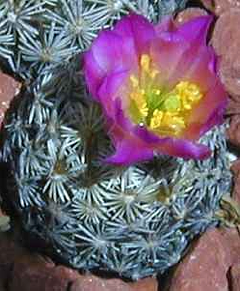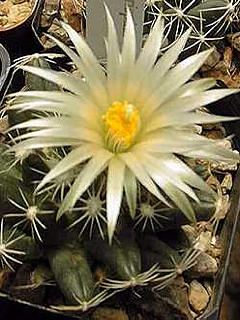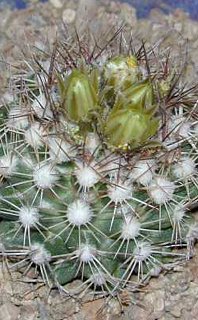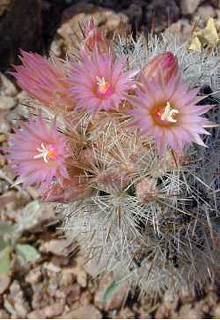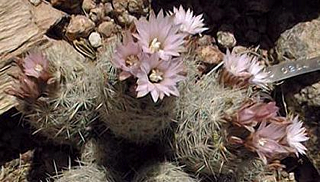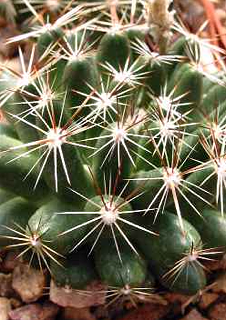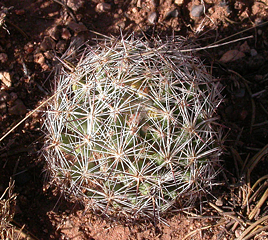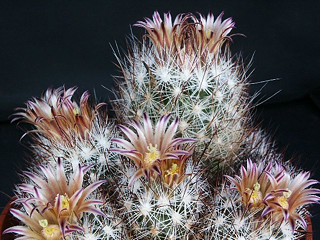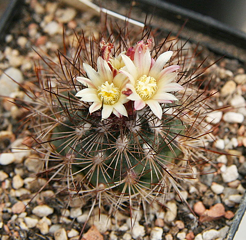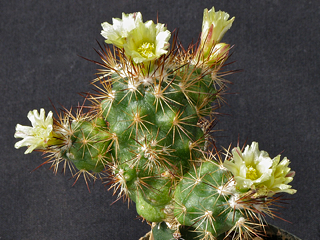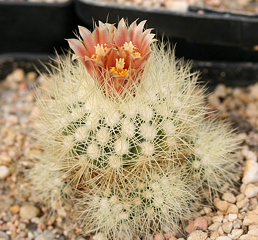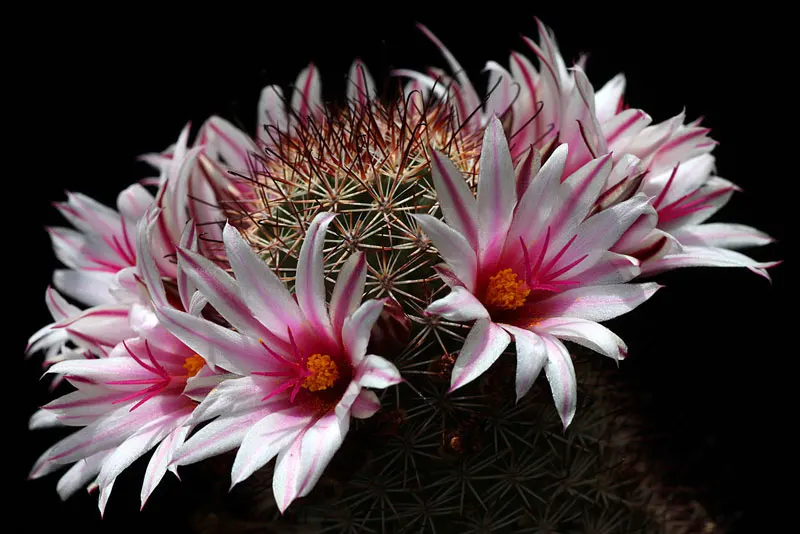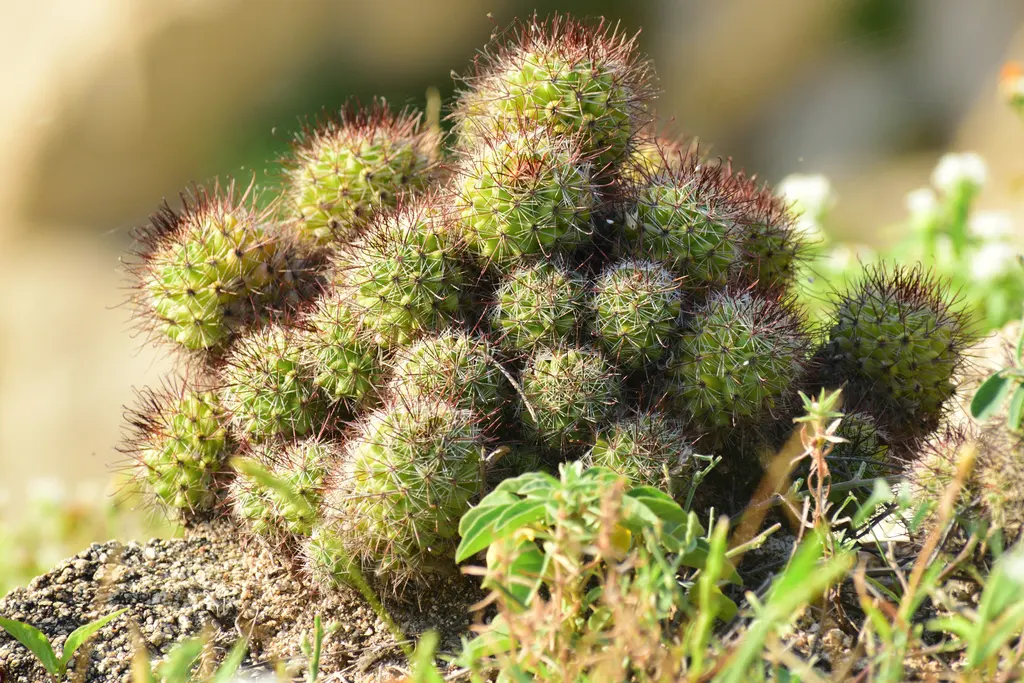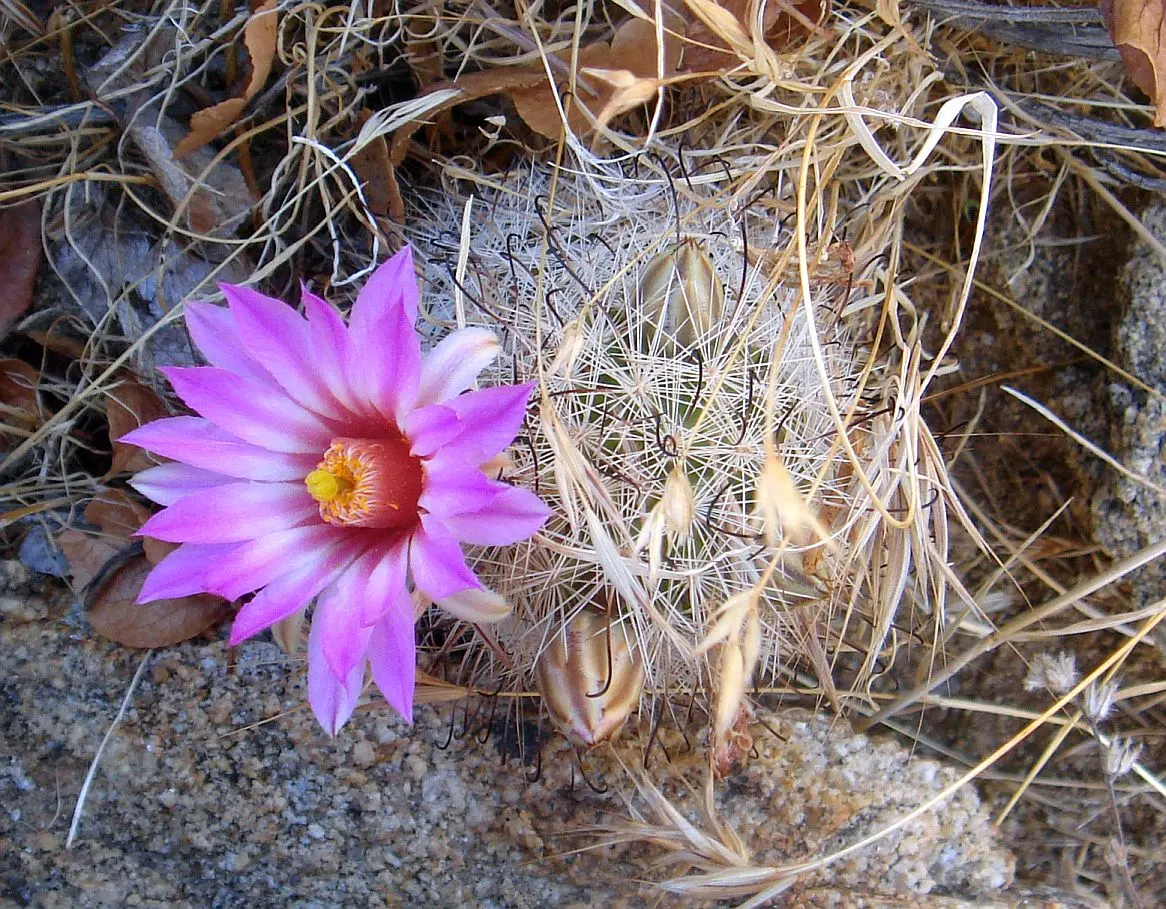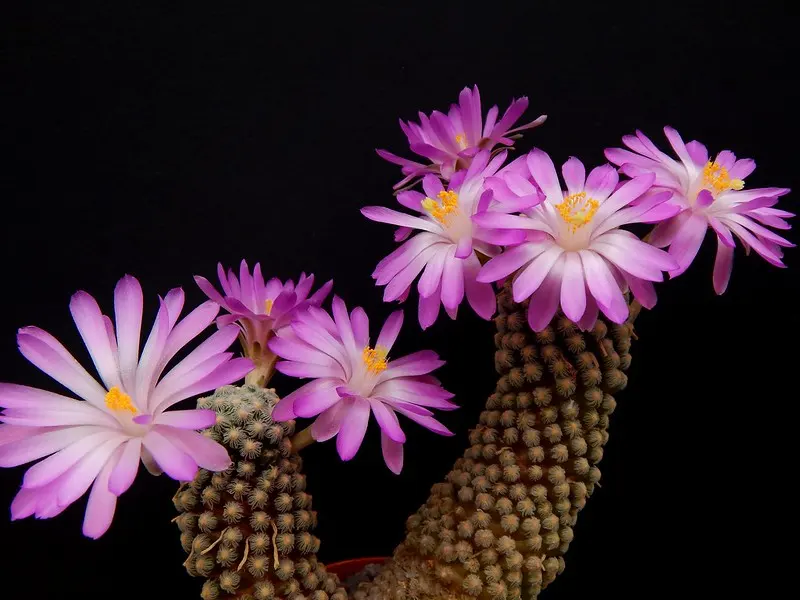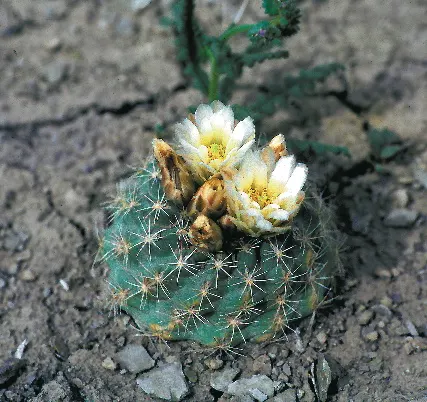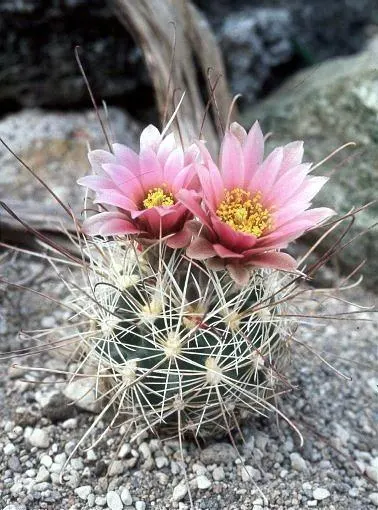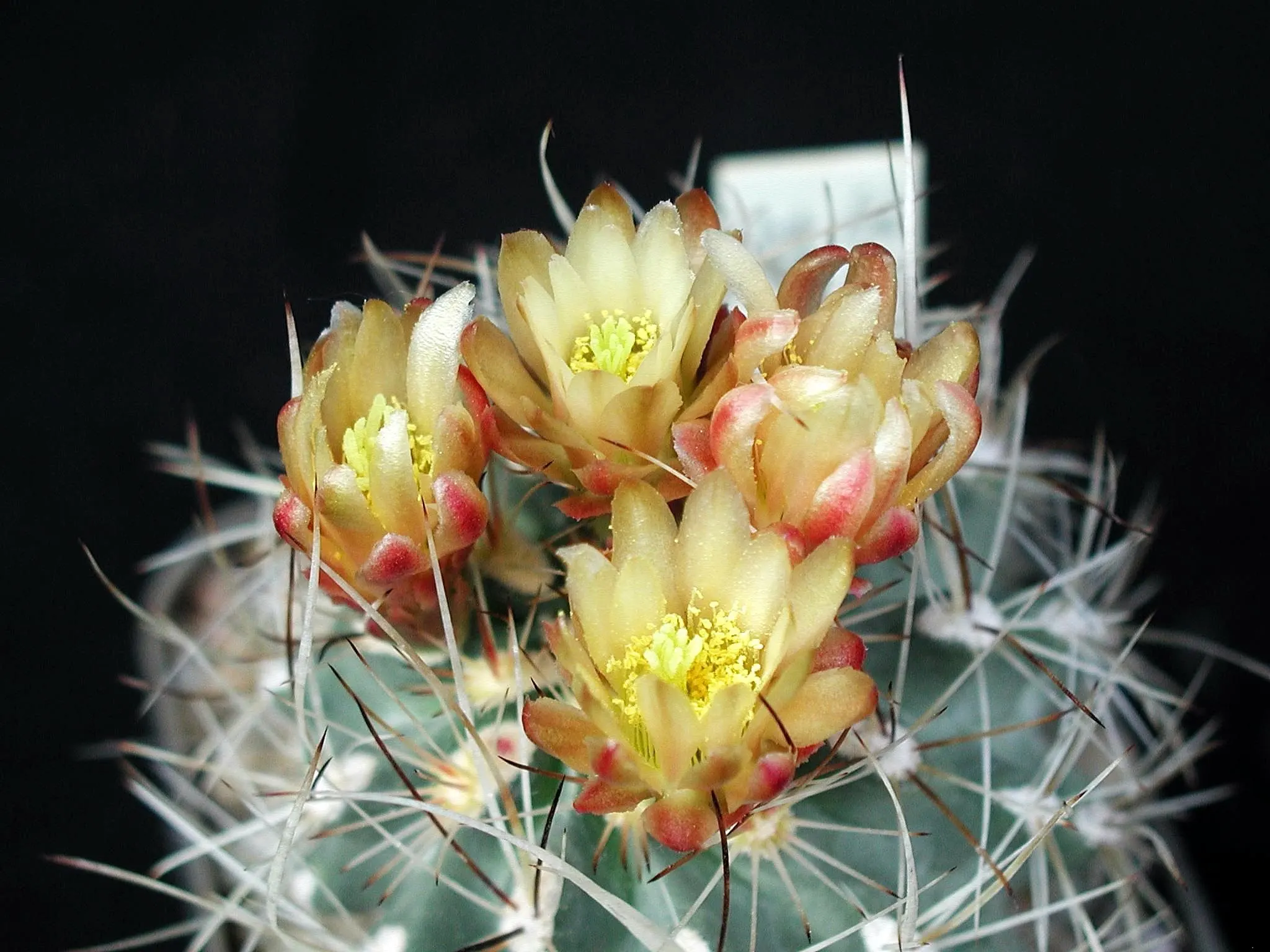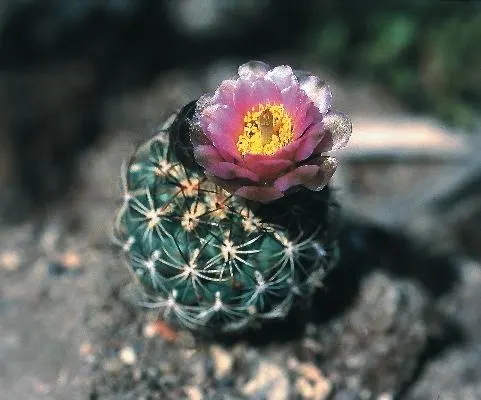Submitted by: Jim Tanner, Maria Capaldo, and Terri Straub
Coryphantha (from Greek, “flowering on the top”), or beehive cactus, is a genus of small to middle-sized, globose or columnar cacti. The genus is native to arid parts of Central America, Mexico, through Arizona, New Mexico, and western Texas and north into southwestern, central, and southeastern Montana. With its two subgenera, 57 species and 20 subspecies, it is one of the largest genera of cactus.
There are four characteristics that distinguish Coryphantha from other cacti.
1. Their bodies do not have ribs, just tubercles.
2. The flowers form at the top of the plant (the apex or growing end of the stem).
3. The tip (podarium) of each flowering tubercle has three parts, the spiny areole, the groove and the axil. Without the groove it is not a Coryphantha.
4. The seed coat (or testa) has a net-like pattern (reticulate).
More than many other cacti, the Coryphantha change in their appearance over their lifespan. The presence or absence of a central spine is not indicative of the genus, even in fully adult plants.
All Escobaria have been moved to the genus Pelecyphora.
Pelecyphora (=Escobaria) is a small North American genus from southwestern USA down to northern Mexico. It is closely related to Coryphantha and somewhat more distantly to Mammillaria.
Pelecyphora have small, funnel-shaped flowers in the spring and summer. The flowers are generally yellow, pink or brownish. In general Pelecyphora are very rot prone. They should be underpotted, be in a container with excellent drainage, and be watered carefully. All of them can take some frost.
Acharagma is a genus of two small cacti species from Coahuila and Nuevo Leon in northern Mexico.
These plants have globose bodies less than 3 inches in diameter and no more than 3 inches high. They may be somewhat cylindrical in shape and typically grow as individuals, but may put off several offsets from the bottom. These plants have tubercles and flower from the top, which is similar to both Escobaria and Coryphantha, however, they do not have a groove from the areole to the axis. In fact, the name Acharagma means in Greek “no groove” [a (no) – charagma (groove)]. The flowers are at the stem tips, and range from cream to pink and yellow. The spines are quite thick and can obscure much of the stem and are less than an inch in length. The fruits are smooth little pods that are green to purple colored.
The genus is of relatively recent creation, the species originally being described as part of Escobaria, although recognized as a separate section by Nigel Taylor in 1983, and raised to a genus by Charles Glass in 1998.
Cochemiea is a genus of cactus. It had previously been synonymized with Mammillaria, but molecular phylogenetic studies have shown they are different, and Cochemiea has been accepted as a separate genus. The genus Cochemiea has been expanded to include a large number of species previously placed in Mammillaria. There are currently 37 species in the genus Cochemiea.
The name Cochemiea comes from the Cochimi Indians which used to live in Baja California where many of these cacti are found. Their habitat ranges from Southwestern and South Central United States to Mexico.
All species of Cochemiea feature short cylindrical stems that form small clumps of a dozen or more stems that prefer to grow in the cracks of rocks in habitat. The stems are tuberculate and heavily armed with stout spines, many featuring prominent hooked central spines. The flowers can be many different colors. In common with Mammillaria, the flowers are borne from the axils of the tubercles on second-year growth.
Sclerocactus is a genus of cacti. It comprises about 15 species, the exact number depending on the authority. The Greek word Scleros meaning hard or cruel is a reference to the hard, dry fruit.
Plants in this group are native to the Southern United States and Northern Mexico. Here they grow in often very-restricted populations and experience a surprising range of climate conditions. However, despite the harsh environment where these plants seem to thrive, they are notoriously difficult to grow in cultivation. Most people who do succeed in keeping these species do so with a pure mineral substrate with no organic material.
The plants themselves are relatively small globes or cylinders usually with tuberculate ribs. Most have a dense cover of spines with a prominent hooked central spine. Flowers arise from the apex of the plant and point straight up. They are funnel-shaped and range widely in color from pink to yellow to greenish to white and even brown.
LATIN LOOKUP – Loquerisne Latine (Do you speak Latin)?
The meanings of latin plant names on this page – from http://davesgarden.com/guides/botanary/
- Coryphantha [kor-ry-FAN-tha, kor-rif-AN-tha]
From the Greek koryphe (summit, top), and anthos (flower), referring to the position of the flowers on these cacti. - Escobaria [es-koh-BAR-ree-uh, es-koh-BAY-ree-uh]
Named for brothers Romulo and Numa Pompilio Escobar, of Mexico City (late 1800s to mid 1900s). - minima [MIN-eh-muh]
Very small. - sneedii [SNEED-ee-eye]
Named for J.R. Sneed, who collected in the plant in the early 20th century. - vivipara [vy-VIP-ar-uh]
Live bearer; bears live young.
